As soon as you arrive in Australia or the longer you live here the more intrigued you become about why Australian’s love their red meat so much. In fact in 2015 Australia was the biggest meat-eating nation in the world, eating 3 times the global average!
Present days Australians have been brought up on the family tradition from their fathers and Grandfathers to include red meat in their diet daily. Their Local butcher always provided a trusted source of meat and knew how to butcher it correctly. In fact butchers shops are in every shopping precinct and Australian’s know which cuts of meat to choose! There is always a waiting time to be served at the fresh meat counter in the supermarkets of Woolworths or Coles and at the end of the day slot in the local butcher.
-
Is Australian Beef the Greatest Meat on Earth
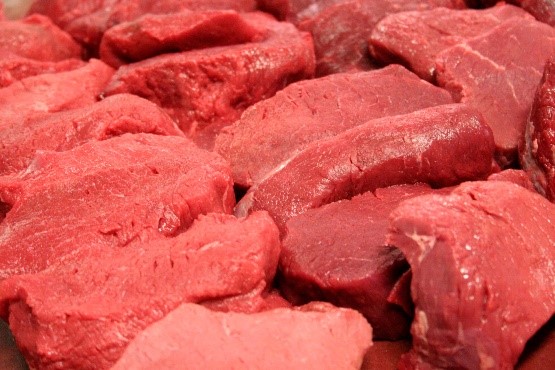
When it comes to Beef, Australians claim there no other country comes close to the taste, tenderness, flavour and quality. The influence as a protein choice for Australian consumers is driven by a Beef Campaign ‘You’re Better on Beef’ which reconnects beef by broadcasting the versatility, nutrition, welfare, sustainability and eating quality and by removing the barriers of health concerns.
The new platform evolves from the previous “You’re Better on Beef” campaigns and inspires consumers to reconnect with beef by incorporating messages extending to versatility, nutrition, provenance, welfare, sustainability and eating quality.
https://www.youtube.com/watch?v=6fAZrk_7mVc#action=share
Consumers are made to feel proud to choose beef to feed their families and are even reminded on a TV advert of the greatness of Beef! The commercial starts with a local butcher shop and leads on to going to famous landmarks around the world as well as in Australia, to show how a customer’s desire for ‘just’ a rump steak does not do justice to the Greatness of Beef!
2. Are Women Better off on Beef as Their Source of Iron?

The redder the meat the higher the amount of ‘haem-iron’! And women need twice as much as men. Iron is needed for energy, your brain, to fight infections, normal growth and development.
Haem-iron is absorbed well by the body and is found in beef and lamb. Non-haem iron is less well absorbed and is found in plant based foods such as dark green leafy vegetables.
Beef and lamb are two of the best sources of well absorbed iron. Eating beef or lamb 3-4 times a week help women meet their iron and zinc needs. Australian Dietary Guidelines recommend having 65g a day of red meat or 130g every second day.
Feeling a little weary is a common symptom of low iron levels. So it is a timely reminder to eat beef or lamb in a mid-week meal, as one of the best natural sources of iron to meet a woman’s iron needs. It is indeed quick and easy to prepare as demonstrated by Dame Edna in the link below
3. How Does a Cow get From the Field to Your Plate?
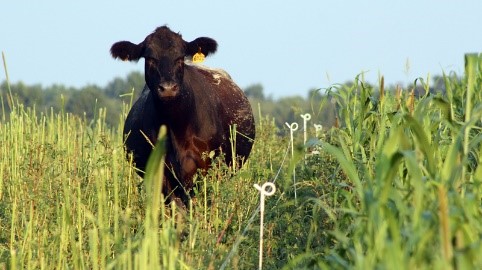
Australian farmers value greatly the health and wellbeing of their stock and a well-cared for stock also produce better quality meat. Australian Butchers and Meat processors are also passionate about delivering top quality, safe and nutritious products to the market.
The Australian Meat Processing Sector is a world leader in processing lamb, beef and goat meat. With approximately 300 abattoirs and a workforce of around 34,000 people, the processing plants have the latest technologies to ensure superior levels of meat production. After grading the meat to specific standards for colour, tenderness, fat, age, sex and any bruising and after trimming and chilling the ‘boners’ cut the meat into different cuts or prepare carcasses to be sent to a butcher who will prepare the smaller cuts of meat.
There is a consumer driven notion of ‘primary’ and ‘secondary’ cuts of meat, certainly as far as beef is concerned. The interconnection between farming practices and consumer choices can be seen in the following clip where a butcher and chef demonstrate beef production from ‘paddock to plate’. The clip raises issues of the consequences of sustainability beef production and helps consumers to make more informed decisions in the supermarket.
4. Is There a Link Between Red Meat and Cancer?

New research has confirmed that a diet with a high intake of red meats, processed or unprocessed, is associate with cancer deaths. The risk is higher for people who regularly eat processed meats such as bacon, ham, hot dogs, sausages and salamis. So limiting red and processed meats is consistent with Bowel Cancer Australia recommendations, as one way of reducing bowel cancer.
As lean red meat is an important source of iron, protein, zinc and vitamin B12 so there is no reason to take meat out of your diet completely. Dietary guidelines for adults recommend consuming about 130g of cooked red meat about three times a week is enough to reduce the risk. Limiting or avoiding processed meat, which is high in fat content is recommended by the Cancer Council.
So filling half your plate with vegetables and not thinking that meat is the main part of a meal will help. Sausage Sizzles, a favourite Australian event are advised to be only partaken in occasionally! Some research suggests that burnt or charred meat may increase the risk of cancer, meaning that the Australian Barbie is a clanger! So Residents of the world’ meat eating capital would be wise to think that if they can’t give up a barbeques steak, then reduce its carcinogenic properties by marinating it in olive oil and garlic and cook on a low flame as this reduces the harmful chemicals being formed.
5. Do Australians Lamb Alone?
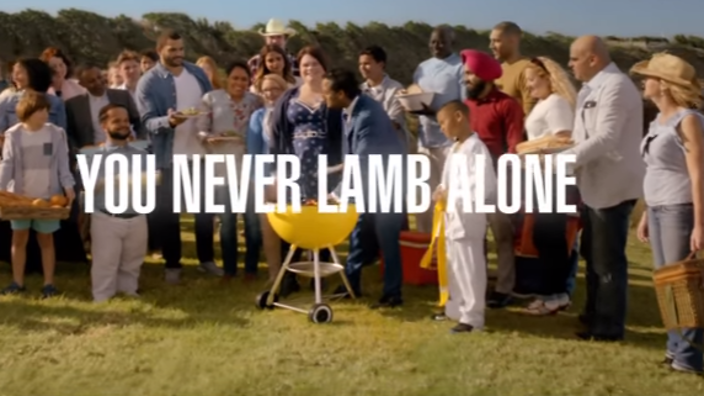
Lamb is reputably the most loved meat by Australians. During the cooler months it is one meat that people love to share with family and friends. The simplicity of how to cook lamb makes it very versatile on a menu and is the go-to in unpredictable or spontaneous occasions.
A most entertaining ad from the Meat & Livestock Australia’s (MLA) Australian Day lamb campaign recognises Aboriginal Australians as the first settlers of the land and then how other boats came in!
https://www.youtube.com/watch?v=uGdjX8QqL_Y
Then the MLA’s ‘You Never Lamb Alone is a frank and light-hearted showcasing of diversity. It highlights lamb’s role in a modern and diverse Australia, featuring people from all walks of life, coming together over a lamb barbeque. Everyone is invited to the table, regardless of who they are or when they came here
6. Which is Better: Grain-fed or Grass-fed Meat?
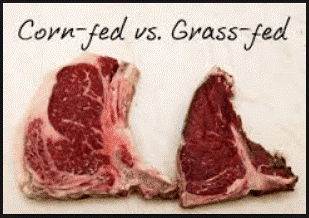
In Australia approximately 97% of cattle are located in a grass fed setting whereas about 3% are located in a grain fed environment. To be labelled, grain fed’ the animals need to be fed more than 60 days.
Australian cattle, sheep and goat famers value highly the health and wellbeing of their stock. Farmers often raise their animals from birth and know that they are healthy and will produce better quality meat. It is accepted that consumers want their red meat produced humanely and ethically and Australian meat is recognised around the world for their high standards in their health and welfare of their livestock. Australia also has a national tracking system which means that every single animal’s movement is tracked through the whole of its life.
The majority of cattle in Australia are raised on natural pastures and are considered grass fed. In Livestock grazed on pastures absorb carotene from the grass which is a pigment resulting in the fat having a yellowish tone. Some cattle are fed grain during the poor seasons, as well as turnips and oats to bulk them up. The breed type as well as variations in seasons can influence the quality and style of beef and produced off grass. Grass fed beef is known to have a robust complex flavour whilst grain fed beef will increase marbling, giving a tender, mild more buttery flavour. Grain fed beef also tends to have a brighter white fat and more marbling.
It is worth knowing that Australian animals are never fed genetically modified corn as in other countries but feed their stock on Australian sorghum, barley and wheat. Also when chemicals are used to dip animals, stock are not allowed to go to market for 6 weeks.
7. What is the Australian Meat Farmer’s Commitment to Sustainability?
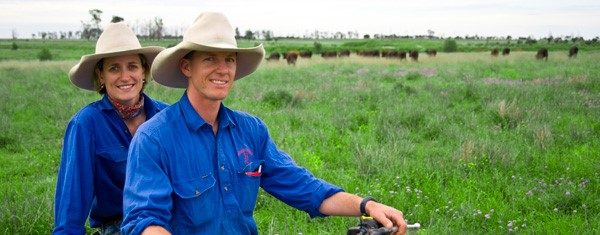
As more than half Australian land is used for grazing livestock, cattle and sheep farmers know their responsibility to sustainably manage the environment. Extensive programs of the cattle and sheep industry, as well as the Australian Government, aim at improving further the farming industry’s environmental management.
Clean water and clean waterways is essential. Reducing sediment from grazing land due to erosion from grazing, is managed, so as not to enter waterways then be passed on to the precious coral reefs. The entering emissions from cattle digestion adding to the greenhouse gases is of course an issue is being addressed particularly with the forest destruction and planting of trees balance, to maintain a stable climate.
All forms of food production add to a low of biodiversity to some degree. Past European agricultural practices led to a decline in biodiversity. Today Australian cattle and sheep farmers work hard to manage their decisions so as improve productivity and biodiversity on their properties.
Farmers recognise that when focussed on sustainability the benefits are not only for the environment but also for the productivity and quality of their meat. Healthy soils retain more water and nutrients and requires less chemicals that need to be applied.
A 100 initiatives to deliver sustainable farming of sheep and cattle as well as adding and improving the environment can be followed on a series of videos in the link below:-
8. What is the Australian Red Meat Integrity System, Safety and Traceability?
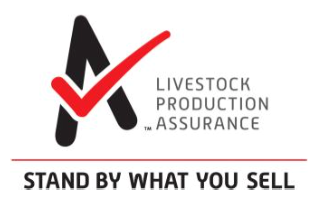
Australian red meat is sold to more than 100 countries throughout the world, so maintaining trust is not something left to chance. Australia’s reputation for producing green, clean and safe red meat products is a major reason for their success. The red meat industry have a rigorous system of measures along the supply chain to ensure the safety, quality assurance, traceability and ethics of producing Australian meat. So that livestock producers have a trusted product and can stand by what they sell.
LPA, Livestock Production Assurance is an on-farm assurance program which is audited independently, covers, food safety, animal welfare and biosecurity.
NVD is the National Vendor Declaration which is submitted for any movement of stock.
NLIS the National Livestock Identification improves Australia’s ability to track livestock during food or disease incidents. It gives information through traceability and identification of livestock that is crucial for market access for Australian meat globally.
https://www.youtube.com/watch?v=Q5yNYBMS73I
The supply chain consists of: – on-farm, feedlots, transporters, sale yards, processors and exporters. At every stage the Meat & Livestock Australia has safety programs and initiatives that all abide to.
9. Why is Kangaroo Meat Commonly Available to eat in Australia?
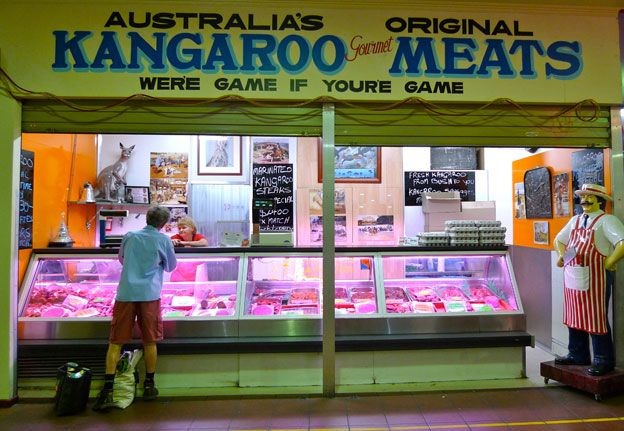
There are no Kangaroo meat farms in Australia so all Kangaroo meat is supplied from wild animals. The amount of kangaroos harvested by professional shooters according to a strict quota system. Depending on that year’s population estimate (as each species of kangaroos changes yearly) it works out somewhere between 10-15% of the species population.
Although Kangaroo are a protected species, they are widely regarded as pests. There are so many of them so they have to be culled regularly to maintain ecological balance and prevent damage to farmland. The species of kangaroo which are commercially harvested are Red Kangaroo, Western Grey Kangaroo and Eastern Grey Kangaroo. Humane shooting practice is abided to.
Even though Australians have a reluctance to eat Kangaroo meat (as it is one of their national symbols) over half have tried it. People object to eating it due to concerns about hygiene or animal welfare. It is a healthy meat full of iron, low in saturated fats. Kangaroos do not produce methane like cows and other grass eaters due to a different bacteria in their stomachs.
Kangaroo meat tastes stronger than beef or lamb. It has a gamey taste with a lot of flavour, a cross between venison and buffalo meat. As a leaner meat it is considered healthier than beef or lamb. One favourite kangaroo tail soup!
And it’s not just Australians that are becoming partial to it – kangaroo meat is now regularly exported to over 40 countries worldwide, with the industry saying that annually it’s worth an approximately $150 million.
10. Why is Marbling in Beef so Important?
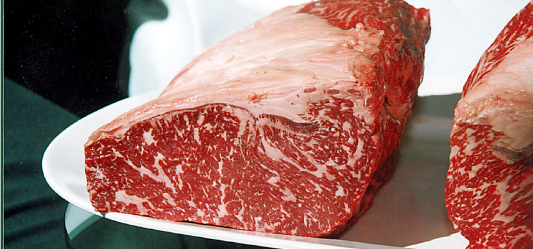
Marbling is the fine flecks of visible fat that appear within the muscle of lamb or beef. It is the last fat to be laid down and so the first fat to be used as an energy store. Consequently the finishing stages of an animal are crucial. Marbling takes time to develop in an animal which is why it is more important in beef than in lamb and pork.
The level of marbling is greater in cattle that are fed on a high energy diet. Besides being genetic to certain breeds, grain finished cattle which are stress free, express the most marbling. The AUS-MEAT marbling scores range from a scale of 0 (no marbling) to 9 (abundant marbling) with the most marbling being towards the neck.
Marbling is very important in high quality beef as it improves the juiciness and flavour. Unique flavour and aroma compounds of beef are held in the fat, while lean meat has a consistent flavour throughout across all breeds. On cooking the fats melt and the compounds are released giving a satisfying aroma and a rich beef flavour. The melting fat also adds to the tender texture of cooked marbled beef or lamb. As the fats slowly warm up on cooking they slowly enhances a mouth-watering juicy flavour by improving the retention of water
https://www.youtube.com/watch?v=N60yBLXUSks&feature=youtu.be
